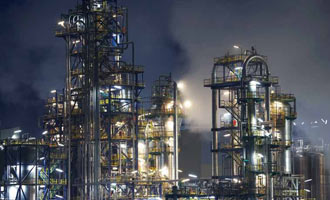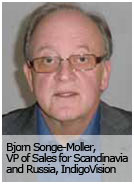Tough Product Requirements
Security products deployed for oil and gas projects have high specifications. Customers are aware of this and will look for security experts with the highest standards and specifications to design their system, said Patrick Lim, Director of Sales and Marketing, Ademco Far East. To build a high-caliber system, each device must pass rigorous testing and meet requirements.
 There are many international standard certifications, such as ATEX for explosive environments, hazardous location certification, CE approval, and UL and IP rating standards, Liong said.
There are many international standard certifications, such as ATEX for explosive environments, hazardous location certification, CE approval, and UL and IP rating standards, Liong said.
Tests ensure the system is up to specifications and customer expectations. “In most cases, the security team will perform a basic proof-ofconcept with a potential vendor's product in either a lab environment, so as to not adversely affect the production security infrastructure, or a real-world test deployment,” said Brian Karas, Director of Field Engineering, VideoIQ. “The security team will also conduct other physical and IT security tests of the device as applicable, such as testing for environmental penetration of dust or water and vibration resistance.”
High-End Products
The unique demands of oil and gas facilities mean high-end products are mostly preferred. “The recession has not affected this, and new equipment and systems have and will continue to be used to protect these highly critical infrastructures against any threats and the regulated environment,” Liong said. “Low-end security products are definitely not intended for such high risk, 24/7 operations since they are not reliable enough to perform at high standards at all times.”
 Better-quality products are designed for tough environments. “This is a reason why few low-end systems are used because they must be able to withstand humidity, pressure, rust, wind and a multitude of other environmental factors,” Lim said.
Better-quality products are designed for tough environments. “This is a reason why few low-end systems are used because they must be able to withstand humidity, pressure, rust, wind and a multitude of other environmental factors,” Lim said.
However, few budgets can afford such expensive systems. Thus, mid-end products can be used in less important areas, while qualified products are placed in higher risk areas. “In the interest of saving costs, one may choose to integrate devices of different quality levels as a means of optimizing value,” said Lyle Alexander, Principal Consultant, A.R.M. Specialists. “This approach must be holistic in order to be effective, since there is a requirement to include all operational departments.”
For example, a multimegapixel camera cased an explosion-proof housing is not necessary for a maintenance depot gate, Karas said. “Like all security system designs in all verticals, it is important to consider the total assessed risk, budget and regulatory requirements to choose the proper equipment for any given installation. Aside from the top-level regulatory security requirements, there are often a number of site-specific secondary security concerns that may be adequately addressed with less expensive or complex components.”